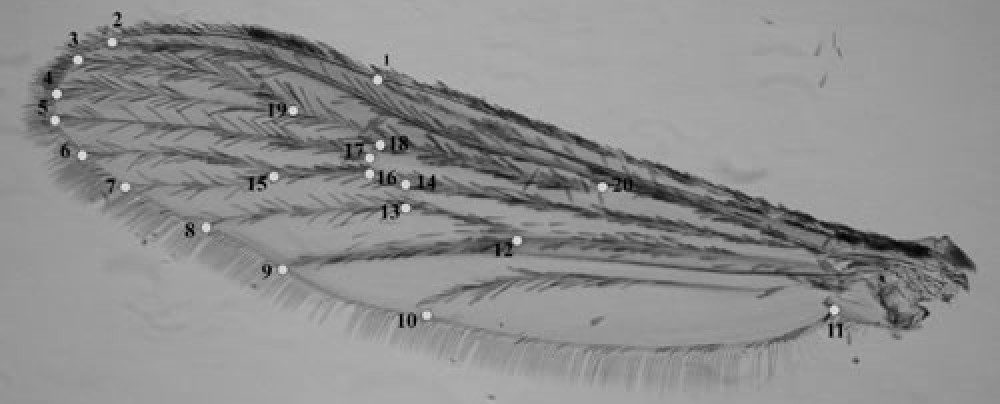The RELEVANT FORMAT of an input FILE is like the CLIC format:
- The first row is a FREE COMMENT, next rows are the DATA.
- The first row is MANDATORY, and CANNOT BE EMPTY.
- Data (next rows) are organized as a table (without headers).
- Columns are separated by a TABULATION, preferably.
- Empty rows are allowed (except the first one, the comment), but not recommended.
- It is safe to remove any carriage return at the end of the input file.
IMPORTANT REMARKS
- The data corresponding to different groups must be arranged sequentially within the input file: each group is followed by another group. For instance, if the input file is about three species, A, B and C, the individuals of A must be grouped in a submatrix A, followed by the submatrix B, followed by the submatrix C. XYOM asks not only for the input file, but also for its subdivision. In the example of three species A, B and C, a subdivision like “20,24,29” means that the 20 first rows are about individuals of species A, the next 24 rows about individuals of species B, and the next 29 rows about species C.
- For the file containing pseudolandmarks (outlines).
- After the very first row, which is a comment, the outline file contains the data, i.e., the x,y coordinates of successive pseudolandmarks, however the three first columns are special columns:
– col. 1:
the number of points of the digitised contour (different contours may contain a different number of points); this number includes the centroid point (geometric center of the configuration)
– col. 2 and 3:
the X and Y coordinates of the centroid point - Next columns are the pseudolandmarks, i.e., the coordinates of the digitised contour
- The XYOM pseudolandmarks format is automatically built by XYOM when digitising contours.
- Note that the matrix is made rectangular by replacing missing data with NA or NaN – like the R format of an outline file (J. Claude, 2008). To convert XYOM/CLIC format of outlines to the R format as used in Claude (2008), just remove the three first columns (MISCELLANEOUS, WORKING ON FILES, EXTRACTING)
- After the very first row, which is a comment, the outline file contains the data, i.e., the x,y coordinates of successive pseudolandmarks, however the three first columns are special columns:
- Input data are ASCII files located in either your computer hard disk or your Google drive.
- The CLIC …Format.txt format of CLIC is accepted by XYOM as input format.
- E X A M P L E of input data, as used in the published article about XYOM (Dujardin S. & Dujardin J.P., 2019) :
- LMSL means Landmarks + SemiLandmarks.
78, 76 is the subdivision of the file which contains data about two species: Panstrongylus chinai (n=78) and Triatoma carrioni (n=76). Data describe the operculum of the eggs. Each operculum was defined by two landmarks (LM) and 12 semilandmarks (SL). The SL code is 1,8,2,4 (which means 8 SL after the first LM, and 4 SL after the second LM). See Santillán-Guayasamín et al, 2017; Dujardin S. & Dujardin JP, 2019.
OTL means outlines (pseudolandmarks).
78, 75, 75 is the subdivision of the file. Data are pseudolandmarks describing the complete contour of eggs that belong to Panstrongylus chinai (n=78), P. howardi (n=75) and Triatoma carrioni (n=75). See Santillán-Guayasamín et al, 2017.
- For some special analyses, the TPS format or another one might be necessary. These formats are among possible output formats of XYOM
